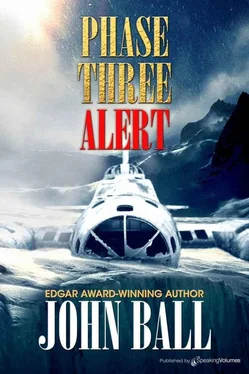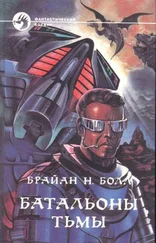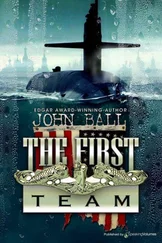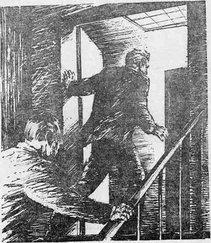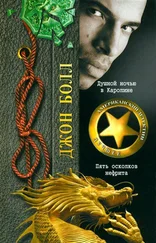The general walked slowly down the line of men and examined each one. Lieutenant Corbin, whose wings identified him as the copilot, as did his position in line, was textbook perfect. Lieutenant Jenkins, knowing that he was somewhat overweight, held his stomach in and his shoulders back.
Sergeant Holcomb had creases in his trousers that would have served to cut the grass, had there been any at Thule. Sergeant Stovers stood with the pride of a professional. Sergeant Perry Feinberg, who had three days to go on his Thule tour, was massive; his usually mobile face was like granite. Atwater was crisp and self-conscious, trying to look at least a bit larger than his essentially small frame would permit.
The general came down the back of the line and, as he looked with an experienced eye, he could detect no flaw. When he had finished, he turned to Ferguson once more. “At ease, gentlemen,” he said. “Most satisfactory. Your name, Lieutenant?”
“Scott Ferguson, sir.”
“I’d like to meet the rest of your crew.”
“My honor, sir.” Ferguson stepped out of the rank. “Sir, may I present Lieutenant Corbin, copilot; Lieutenant Jenkins, navigator; Sergeant Holcomb, flight engineer; Sergeant Stovers, loadmaster—”
“Hell, Bill,” the general said.
“Good afternoon, sir.”
“Since you are the most careful and meticulous man around an airplane I have ever known, tell me,” the general said. “How good is this B-17?”
“The best goddamned airplane in the United States Air Force, sir.”
Ferguson presented Feinberg and Atwater, who shook hands a little formally.
“I’d like to go on board,” the general said.
“Yes, sir,” Ferguson responded. He glanced at the general’s wings, then led the way to the crew entrance ladder and stepped aside. The general went up the ladder and turned right into the bomb-bay area. He went slowly, making an intensive inspection of everything that he saw. He went back as far as he was able, checking the control-cable pulleys, the rear-door latch, every detail within his reach. “It could be that Sergeant Stovers was right,” he said.
“He spoke for the entire crew, sir.”
The general turned around and made his way up toward the flight deck. He checked the navigator’s station and noted the Bendix octant that was properly positioned under the deck. “Is that the original Mixmaster?” he asked.
“Yes, sir, it is.”
“Does it work?”
“Perfectly, sir. Everything on board this aircraft, and every part of it, has been completely gone over and brought up to the highest standards.”
“I see.” The general went forward and looked down at the console. He remained there for over half a minute without moving, then he sat down in the left-hand seat. Since he was a command pilot, that was his prerogative. He surveyed the instrument panel in detail; then he studied the bank of switches above his head. Finally he gave his attention to the console. “I see that you’ve put in all modern avionics,” he said.
“Yes, sir. There is one original radio on board, and fully operational of course, but it was Colonel Kleckner’s opinion that she should be fitted with all necessary modern communications and navaids.”
“There isn’t any single sideband,” the general noted.
“No, sir, but it will go right here when we can get hold of a set to install. Otherwise, as you see, sir, she has dual OMNI, TACAN, DME, glide-slope readout and full ILS equipment.”
“What else would you like to install?”
“Weather radar, sir.”
“Would you be able to fit it if you had it — without a radome?”
“Yes, sir, that problem has already been solved. All we need is the set.”
“How about the tires?”
“Brand-new ones, sir; Goodyear sent them to us. More accurately, sir, they were sent to the aircraft herself. She accepted gratefully.”
The general felt the controls. “I can’t find anything wrong here,” he said.
“You won’t, sir.
“You seem proud of her.”
“I am, sir. She’s my airplane and I love every rivet in her.”
“No, Lieutenant — she’s mine.”
“I don’t follow you, sir.”
“All right, Lieutenant, I’ll spell it out for you. When you first spotted the Penguin on the ice cap, she was facing more or less west. And she was resting on her gear — the wheels had been put down.”
“That’s correct, sir.”
“You might like to know about those last few moments, Lieutenant. I can tell you, because I was flying her. I knew that the rule book said in all emergency crash landings the wheels are to be kept retracted and the aircraft is to be bellied in. That’s the safest way, but it kills the bird — nnaUy and completely in most instances. I couldn’t do that to her, and furthermore, I held on to the hope that the Arctic storm that had us hopelessly iced up would pass and that we would somehow get airborne again. We had crates on board and plenty of gasoline, so we might have been able to thaw her out in some way. You know that I was carrying a vital piece of cargo, and I wasn’t going to abandon it, no matter what. We did try to start fires, until we discovered that no one had any matches.”
“My respects, sir, and my admiration.” Ferguson had thought so many times about the pilot of the B-17, but it had never occurred to him that he might have been a career professional. Now he knew.
He looked out and saw that Sergeant Feinberg was standing beside the controls that operated the main hangar door — the man was a mind reader. Without invitation, Ferguson sat down next to the general, fastened his harness, and then reached for the set of checklist cards. Before him the huge door began to yawn open. Sergeant Holcomb stood in front of the nose, caught his attention, and gestured that the brakes were to be released.
Ferguson read from the top card in his hand. “Pre-engine-start checklist.”
* * *
The general reached over and fitted his hand on the throttles from the underside. “Dammit, I’d sure like to,” he said.
“Sir, correct me if I’m wrong, but aren’t those two stars I see on your shoulder?”
“Three actually — I’ve just been confirmed for another one.”
“Then why are we sitting here?”
Holcomb motioned forward; from somewhere there were enough people to roll the Penguin toward the opening that led to the ramp. As the aircraft moved, Ferguson read off the first item on the list. The general checked and responded. He was well aware that rank has its privileges. Sergeant Stovers came aboard as Sergeant Holcomb continued to supervise the rolling of the stately bomber out onto the ramp.
Seventeen minutes later The Passionate Penguin lifted off the Thule runway, Major General William Miller at the controls. He flew her for almost an hour and during that time Ferguson sat still and kept his mouth shut. When the general finally elected to come in he made an instrument approach that was perfection itself. When the new tires had touched down so gently it could hardly be felt, and the Penguin had rolled to a halt, her engines idling, the general finally spoke across the console that separated the two pilots’ seats. “Thank you, Lieutenant,” he said.
“Thank you, sir. It’s your airplane. Sir, may I ask a question?”
“Go ahead.”
“Can you tell me what was in the crate we recovered?”
The general thought for a moment before he answered that. “I guess that I can — now. It was a highly classified new type of coding machine; fortunately there was a second prototype that got over there OK. It’s totally outdated now, of course, but there were certain components in it that are still being used.”
“I understand, sir. I won’t say a word.”
Читать дальше
